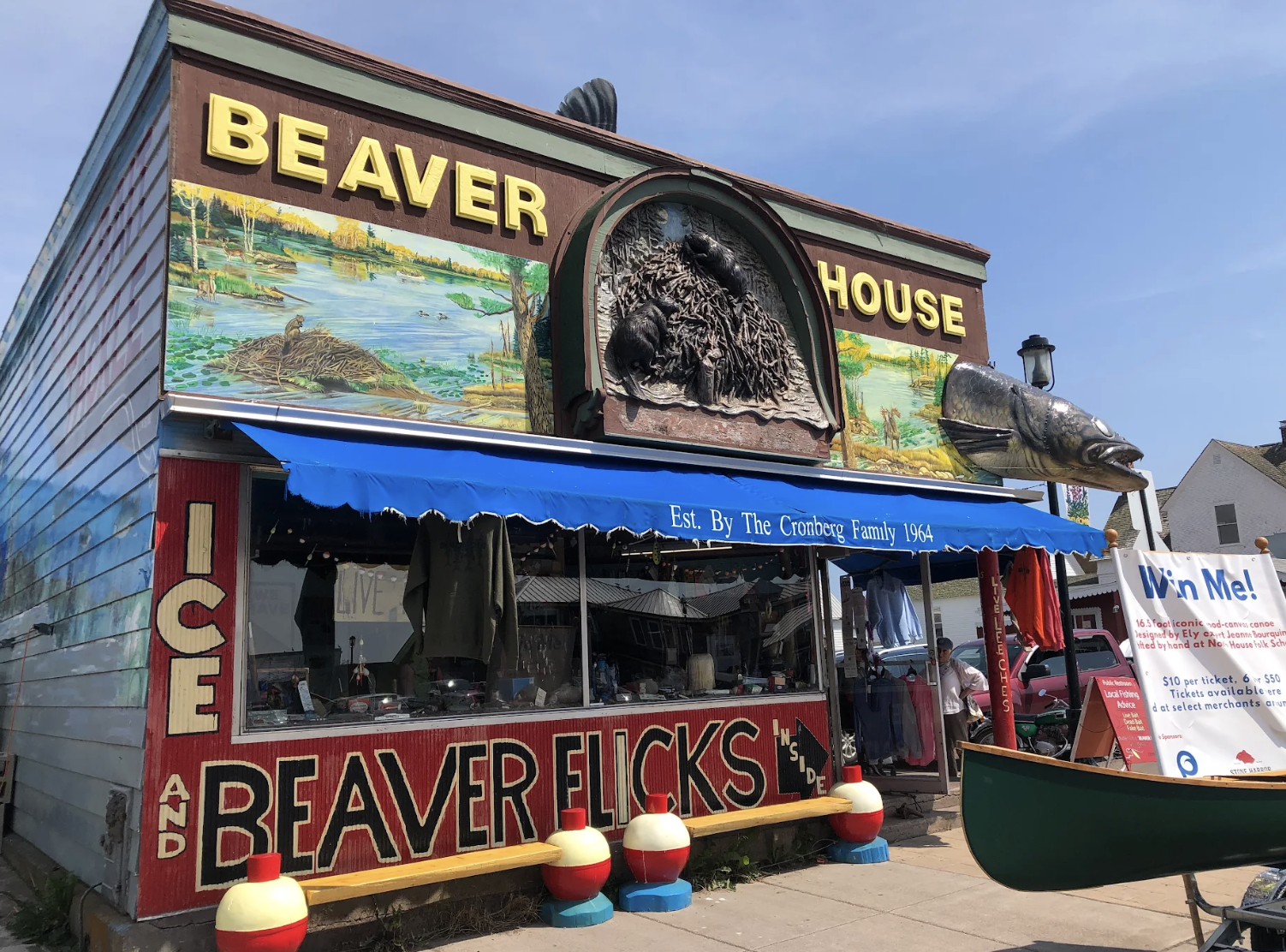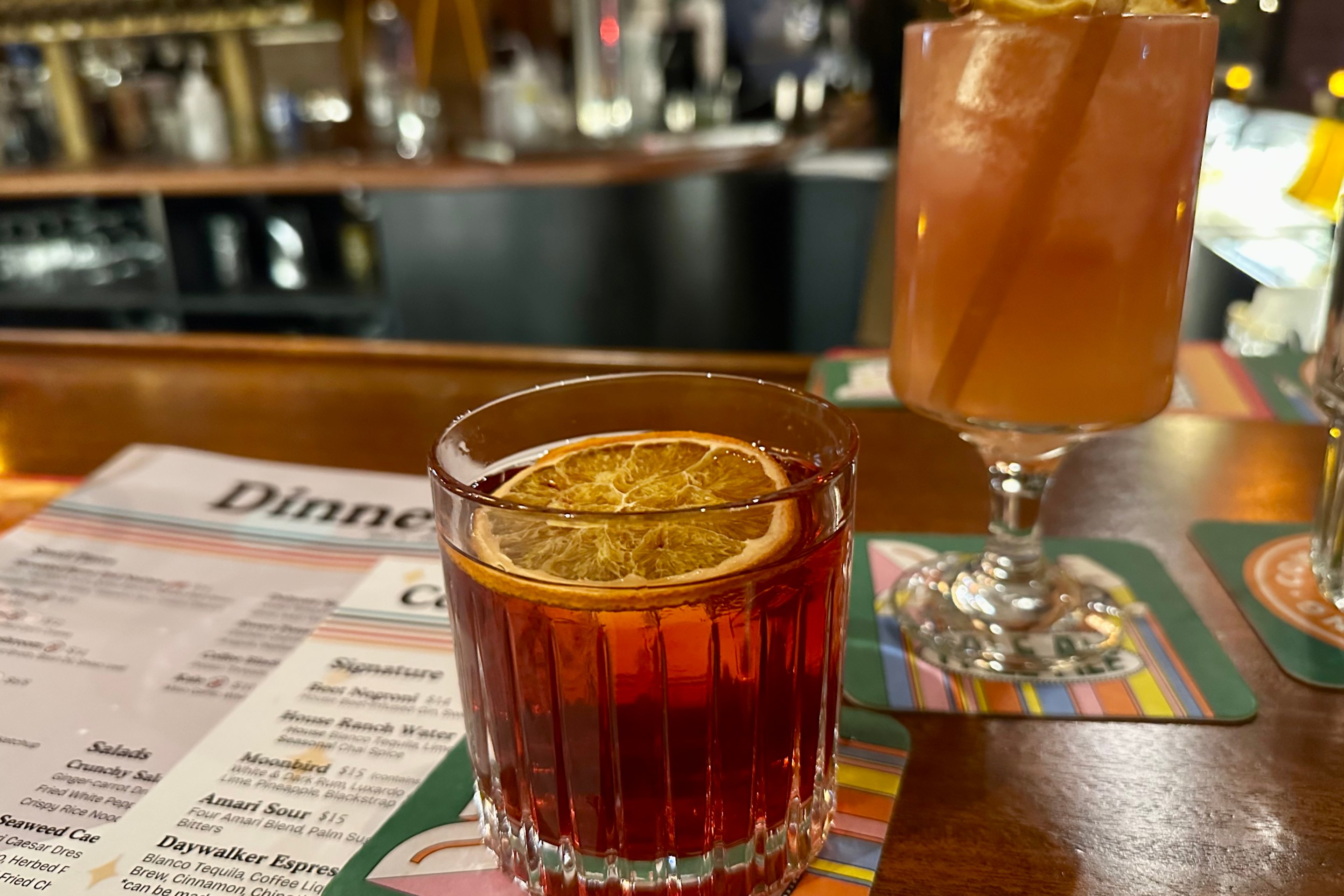In Better Know a Twin Cities Suburb, Racket readers write love-letter travelogues to their suburban hometowns. Why? Because us city rats could stand to learn a thing or two about our vibrant and increasingly diverse neighbors! Want to sing the praises of your suburb? Hit up jay@racketmn.com.
Golden Valley
Founded: 1886
Population: 22,000
Celebrities: Kelly Lynch, film star of Cocktail and Roadhouse; Scott Burns, filmmaker and part of the team behind the "Got Milk?" ads; Aaron Sele, MLB pitcher and judo master; Jordan Leopold, Gophers hockey NCAA championship winner and NHL defenseman.
Golden Valley lies midway between downtown Minneapolis and I-494 out west, and midway between I-494 and I-694 to the north and south—it’s even exactly midway between the equator and the North Pole! But is Golden Valley bussin’ or just… mid? Let's find out.
History
The territory of Golden Valley, in addition to lots of other land west of the Mississippi River, was coerced from the Dakota peoples via 1851's Treaty of Mendota. However, white settlers had already begun to squat on the land illegally, claiming ownership through the Preemption Act of 1841, which got its legal precedent in the form of a land snatch. The Geartys were one of the first white families to move to the area in 1852, a few years before the Treaty of Mendota treaty took effect. Today, Gearty Park is named after their legacy.
Golden Valley was founded in 1886. Curiously, nobody is quite sure where the city got its name. Supposedly early settler William Varner climbed a tall hill, which was later flattened underneath the current Golden Valley Country Club, and declared, “This is my valley, my Golden Valley. This will be my home and the home of my children.” While Bassett Creek does wind through the country club, it’s a fairly shallow stream and doesn’t cut through any valleys on its way from Medicine Lake to the Mississippi. Is any space between two hills considered a valley? That's for topographers to decide.
Like most Twin Cities suburbs, Golden Valley stayed a rural farm community until development expanded out of Minneapolis throughout the early 1900s. The Luce Line Railroad opened in 1912, prompting some growth, but the suburb didn't explode until the 1950s and '60s, following a nationwide trend. Development pretty much stopped by the 1970s, and in my research I think I discovered why:
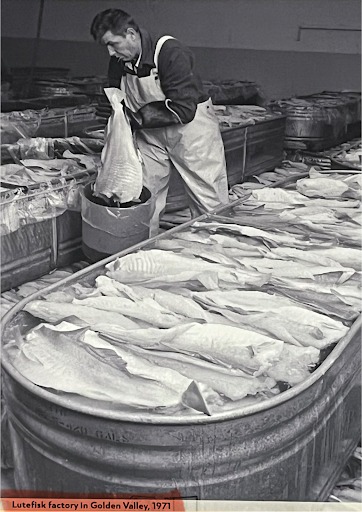
Joking aside, this population boom wasn’t open to everyone.
Official FHA policy limited which loans people could qualify for based on where they lived, a process called redlining that existed all over the U.S. Unsurprisingly, the places where credit was not available were often non-white neighborhoods. Through the University of Minnesota’s Mapping Prejudice program, we can see that non-whites were completely prevented from owning property in many local suburbs.
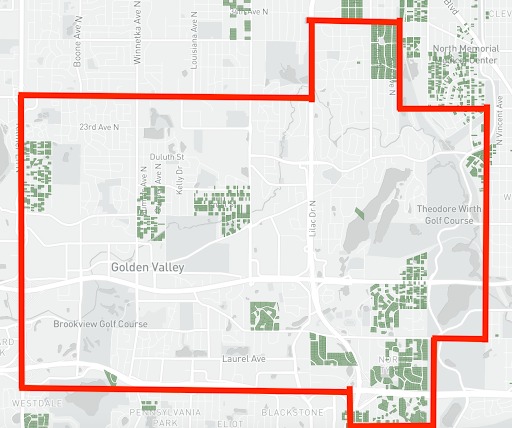
The image above is a screen grab from Mapping Prejudice's website, with red representing the approximate boundary of Golden Valley; each green parcel is linked to a racial covenant written into the property deeds. If you zoom out, you’ll see similar patterns in places that were developed throughout the middle of the 20th century, mostly the inner-ring 'burbs.
In 1970 Golden Valley was 99.8% white, and today it’s 84%. The city continues to reckon with its discriminatory history, though it has made some notable progress. Golden Valley voters elected John Mitchell as the first Black City Council member in 1979, and in 2024 Roslyn Harmon became the first Black mayor.
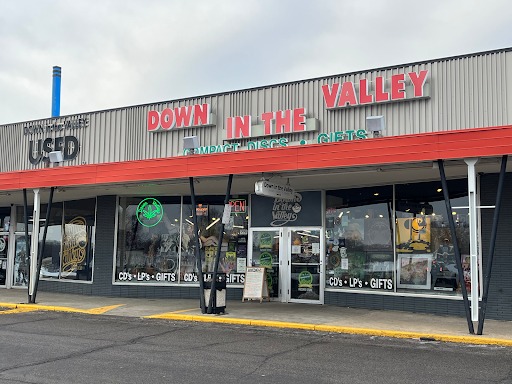
Attractions
The literal biggest attraction in the city is Theodore Wirth Park. Straddling the boundary of Minneapolis, but lying mostly within Golden Valley, this sprawling 759-acre park is almost as big as New York City’s 843-acre Central Park. It features two golf courses, a swimming beach, endless walking and hiking trails, the quaking bog, a snow-tubing hill, cross-country skiing, and the absolute best mountain biking trails in the metro area. There’s even Bare Ass Beach which—you guessed it—is clothing optional (unofficially), but in 2020 Golden Valley PD decided to enforce nudity laws in the ickiest way possible. In the biggest drone controversy since Low played Rock the Garden in 2013, police remotely filmed beachgoers before citing some for public nudity and drinking in the park. This led to a debate about male-presenting bodies being topless versus female-presenting bodies, and in November of 2020 the Minneapolis Park Board repealed its ordinance regarding proper attire in parks.
Theodore Wirth Park boasts excellent biking trails, but if you head west right near the mountain biking trailhead chalet, you’ll find the Luce Line Regional Trail. It winds through Golden Valley, passes south of Medicine Lake, and eventually goes all the way past Hutchinson. Along the way it features easy spurs to the Cedar Lake Trail and Dakota Rail Trail, in addition to crossing several bike-friendly roads.
If you’re visiting Golden Valley's downtown near Hwy. 55 and Winnetka Avenue, make sure you stop by the classic record store Down in the Valley. Though the store has moved slightly since 1972, its original spot was in a basement, hence the “Down” in the name. Founder Steve Hyland first focused on selling “crates of records and pipes,” according to general manager Scott Farrell, but business evolved with the times—at one point they even sold waterbeds! While Christmas is a busy season for Down in the Valley, Record Store Day, coming this year on April 12, is even bigger. “It’s a holiday for us. We have people that camp out overnight. Last year we had 1,200 people in line!” Farrell reports. Those who waited were able to catch Soul Asylum performing inside the Golden Valley location that evening. While you’re waiting for this year’s Record Store Day, keep an eye out for album releases, listening parties, and other live events on the shop's website.
Just across Hwy. 55 from Down in the Valley is the Brookview Golf Course and community center. There’s the regulation and par-three course, naturally, and the city remodeled the community center a few years ago; it now features lawn bowling, an indoor kiddo play area, event center, and one of the most fabulous patios in the metro. Watching a sunset over the course is heavenly.
If you're passing through Golden Valley on I-394, you’ve no doubt noticed the General Mills headquarters building. While the HQ is no longer open to the public, the multinational food company’s campus remains a great example of 1950s modernism from the outside. I reached out to General Mills PR to ask about the campus’ history, though they declined to sit down for an interview. "The office surroundings and environment have been an important part of the General Mills campus since the opening of the building, be it through the sculptures that decorate the park-like grounds or the corporate art collection,” a spokesperson offered via email. If you walk along Betty Crocker Drive (cute!) while obeying trespassing laws, you can observe sculptures like Man With A Briefcase and Sunworshipper.
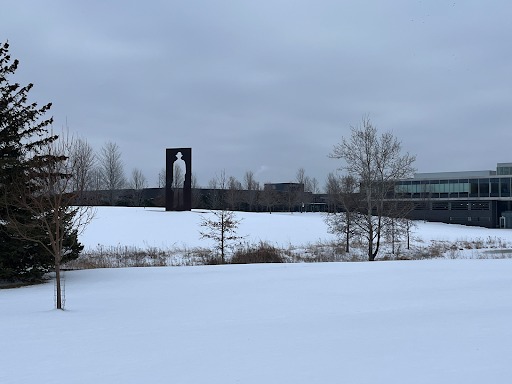
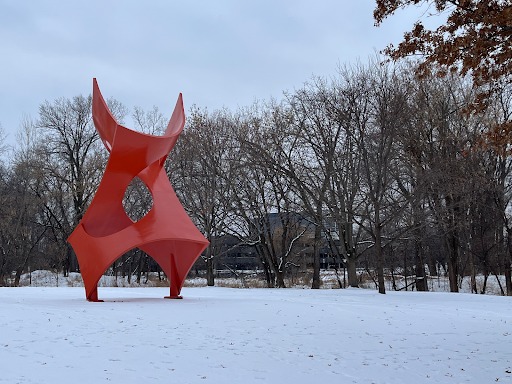
“In 2006, General Mills donated the 19 acres just north of our headquarters to the city of Golden Valley for a new nature preserve and walking trails open to the public," says the spokesperson, adding that an additional nature area was donated just north of its RND facility.
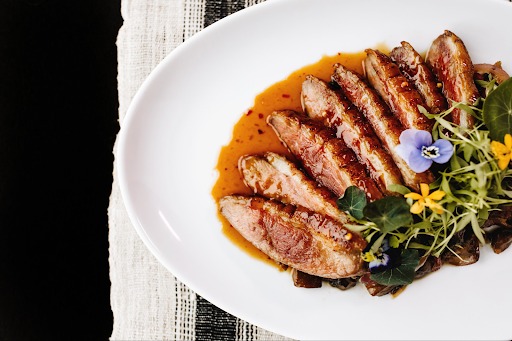
Where to Eat
I'll make the top recommendation simple: Go to Lat 14 as soon as possible. The Ann Ahmed creation, named after the latitude of Laos, Cambodia, Thailand, and the Philippines, lives in the former Perkins where I used to eat countless blueberry muffins late at night with my buddies. It’s trippy to think the greasy-spoon chain could be swapped with a place that now makes creamy tom yum ramen and shrimp jeow bong. Top it off with a house Old Fashioned and a Sneaky Tiger, and you’ll forget all about the long winters up here along the 45th parallel.
One of the metro's last remaining New Bohemia locations persists near Golden Valley's growing downtown. Sadly, the craft-beer chain no longer maintains outposts in Minneapolis, but this site continues to pump out a bazillion beer selections, creative wursts, and pizza-sized Bavarian pretzels. It’s right next to Down in the Valley, making it easy to pair your latest vinyl purchase with a pint!
Finally, there's Golden Valley’s longest-lived place to wet your whistle, Schuller's Tavern. The sign out front says it was established in 1929, though its confirmable history is murky. The structure was built in 1926, according to county records, and Hub Schuller reportedly ran a tavern there as early as 1915. Now, you may be asking yourself: “Self, didn’t Prohibition run from 1920 to 1933?” Well, you would be right, as apparently this bar in the middle of nowhere sold gas and other general goods as a possible cover for selling booze as law enforcement looked the other way. Anyway, today it’s the perfect place to watch the Vikes while basking in the neon glow of a Mich Golden Light sign, catch live music, chill on the new patio, and enjoy top-notch bar eats. Where else in the metro can you get a bacon cheeseburger and fries for $12?
Golden Valley: As Overlooked as a Middle Child?
Despite Westopolis's cringey best efforts, Golden Valley remains a surprisingly quiet city, even though it's directly adjacent to downtown Minneapolis. The West End development you may be thinking of along I-394 and Park Place Boulevard is in St. Louis Park, whereas the Golden Valley side of I-394 is mostly single-family housing. I had to double check my math, but Golden Valley has half the density of most western inner-ring suburbs. Yes, Theodore Wirth Park contributes to that, but the city is still an outlier.
Golden Valley clearly clung to its bucolic origins for a long time. Population peaked in the 1970s, later dropping slightly, but is now rebounding as original homebuilders are replaced with new families. Plus, the city is adding density—the old Red Owl grocery near the city’s downtown is now townhouses, and several multistory buildings are going up there and alongside I-394.
The definition of “suburb” is fuzzy. It has always meant a place just a little bit away from the hubbub of the city. When Minneapolis was filling up, the Kenwood neighborhood was considered a quiet respite from city noise and traffic. Now it’s bordered by an eight-lane interstate, and, somehow, residents are still arguing about whether light-rail trains will bring too much noise.
Predicting the future is risky, but with Minneapolis’s 2040 Plan finally in place, ongoing migration from rural areas to urban centers, and traffic volumes rising back to pre-pandemic levels, I’m guessing that Golden Valley will see increasing demand for its prime location. While the city started out as farmland and then became a prototypical suburb, I think it’s evolving to something else now. The metro area is much more intertwined today than when the 'burbs were developed. My guess is it’ll look more like St. Louis Park and Robbinsdale in the coming years, with multi-unit condos popping up around the commercial areas, boosting density. And, although I grew up there and hate to admit it, singling out unique restaurants worth the drive to Golden Valley proved surprisingly difficult. I really hope the city draws in some new options, as we've seen with many other Twin Cities suburbs. If any restaurateurs are seeking a great location, there’s still one more Perkins on I-394 to exorcise.
Previously in Better Know a Twin Cities Suburb...
- Eden Prairie: Neither Eden nor a prairie, Eden Prairie is still a garden of earthly delights.
- Champlin: This riverside north metro 'burb is home to sprawling parks, ample yarn, killer BBQ, and one beloved dinosaur.
- Monticello: There's more than swans, RVs, and flags inside this booming outer-ring 'burb.
- Hastings: A new-ish resident’s deeply subjective guide to Rivertown.
- New Hope: New Hope is the suburb you forgot because it’s impossible to know when you’re there.

